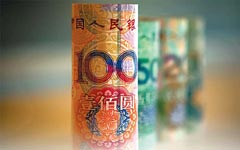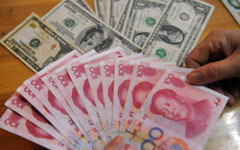The financial costs for the real economy in China have remained very high in recent years and the current lending rate for its enterprises is much higher than in developed countries. China's enterprises had to pay a 6.15 percent loan rate in 2013, compared with 2.25 percent in the US, 1 percent in Japan, and 3.5 percent in Germany. Since the 2014 Spring Festival, some commercial banks have raised their lending rate by 60 percent or more. The bill discount rate in China's Pearl River Delta and Yangtze River Delta has already increased to around 8 percent. The high borrowing rate for small and medium-sized enterprises has put an unendurable burden on the struggling players in the real economy.
To change such an adverse financing environment for the real economy, the government should take some effective measures that not only maintain a generally sound and steady monetary policy. They should also put in place a moderate, controllable and targeted loose monetary policy to meet the real economy's demand for funds.
|
 |

|
Slight monetary policy adjustments should be made at an appropriate time. Through the adoption of a series of regulatory tools, including open market operations, reloans, rediscounts, short-term liquidity operations, standing lending facilities, as well as the issuance of targeted central bank bonds, such policy adjustments should be far-sighted, timely, targeted and flexible to maintain the stability of short-term market liquidity while controlling middle and long-term liquidity. Through its balance sheet operations, the central bank can also exercise direct or indirect liquidity management over different financial institutions and even sectors of the real economy.
A targeted lending policy should also be adopted to bolster real economic development. For example, a loose credit policy targeted at strategically important emerging industries and those advanced manufacturing, production service and small and micro-sized ones to meet their financing demands. For financial institutions that fail to abide by this policy, the central bank can issue specific bonds to tighten their liquidity.
Lowering the reserve requirement ratio for banks should also be used to moderately increase liquidity, especially when liquidity risks occur at a time when the exit of the US' quantitative easing will result in the dwindling of China's pool of funds.
Taking a longer perspective, China should focus on how to build an effective financial market in which its financial system can more efficiently serve the transformation and upgrading of the real economy. To this end, it should further raise the pricing transparency of its interest rate market to make its actual interest and exchange rates more accurately reflect the degree of scarcity of capital and foreign exchange. It should also further relax the restrictions on access to the financial sector by non-governmental capital and cultivate a banking and credit system for small-scale businesses. At the same time, the country's financing market should be opened to non state-owned entities to meet the country's diversified financing demands at the critical period of its economic transformation. Measures should also be taken to optimize private and government deposits and the entry of international capital to promote competition between depositors and investors, more efficient distribution of capital and lower the financing costs for the real economy.
The author is an associate research fellow with the China Center for International Economic Exchanges.
